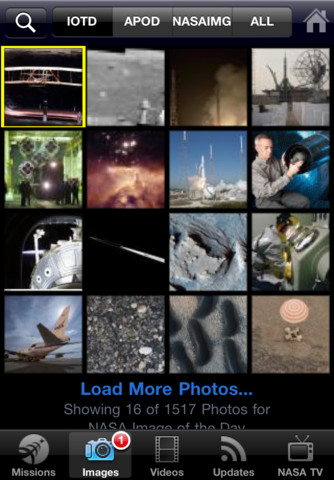The NASA App collects, customizes and delivers an extensive selection of dynamically updated mission information, images and videos and Twitter feeds from various online NASA sources in a mobile package.
WiFi, 3G or Edge network connection required.
[video:http://www.youtube.com/watch?v=clhEHnEtGtU]


[video:http://www.youtube.com/watch?v=V7MIOgiTVZA]




[video:http://www.youtube.com/watch?v=VAs8gbb3vR4]

Another (new) app from NASA to be considered is the Meteor Counter.
[video:http://www.youtube.com/watch?v=etEIBjh2dKg]
NASA is looking to skywatchers for help studying incoming objects. While giving users information about meteor showers, the app can send info back to NASA about the brightness and location of shooting stars (only for Apple users).


